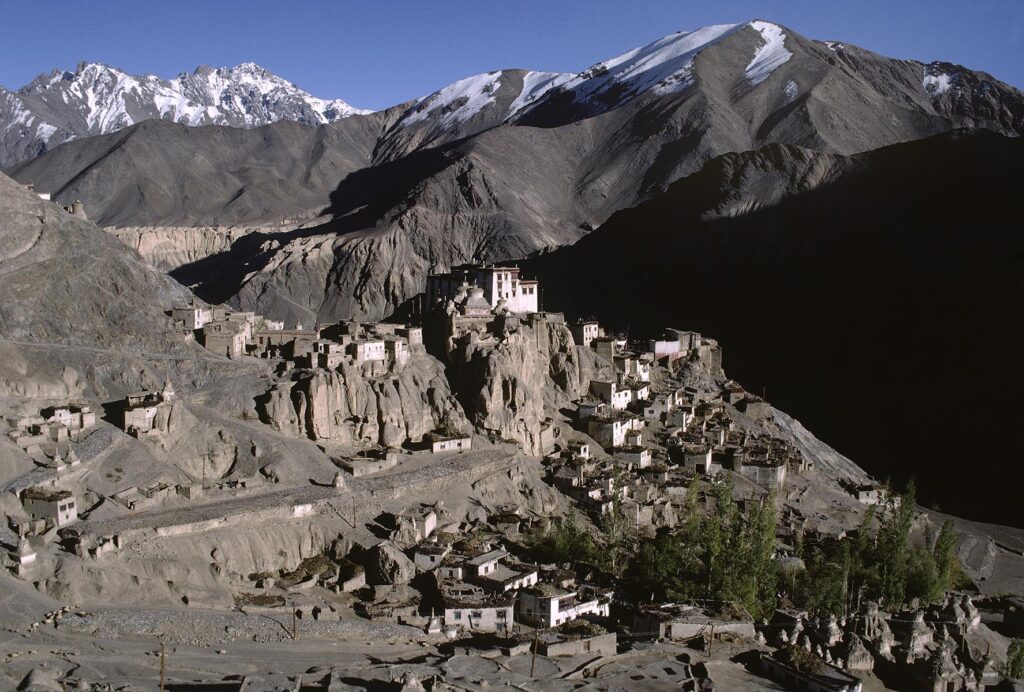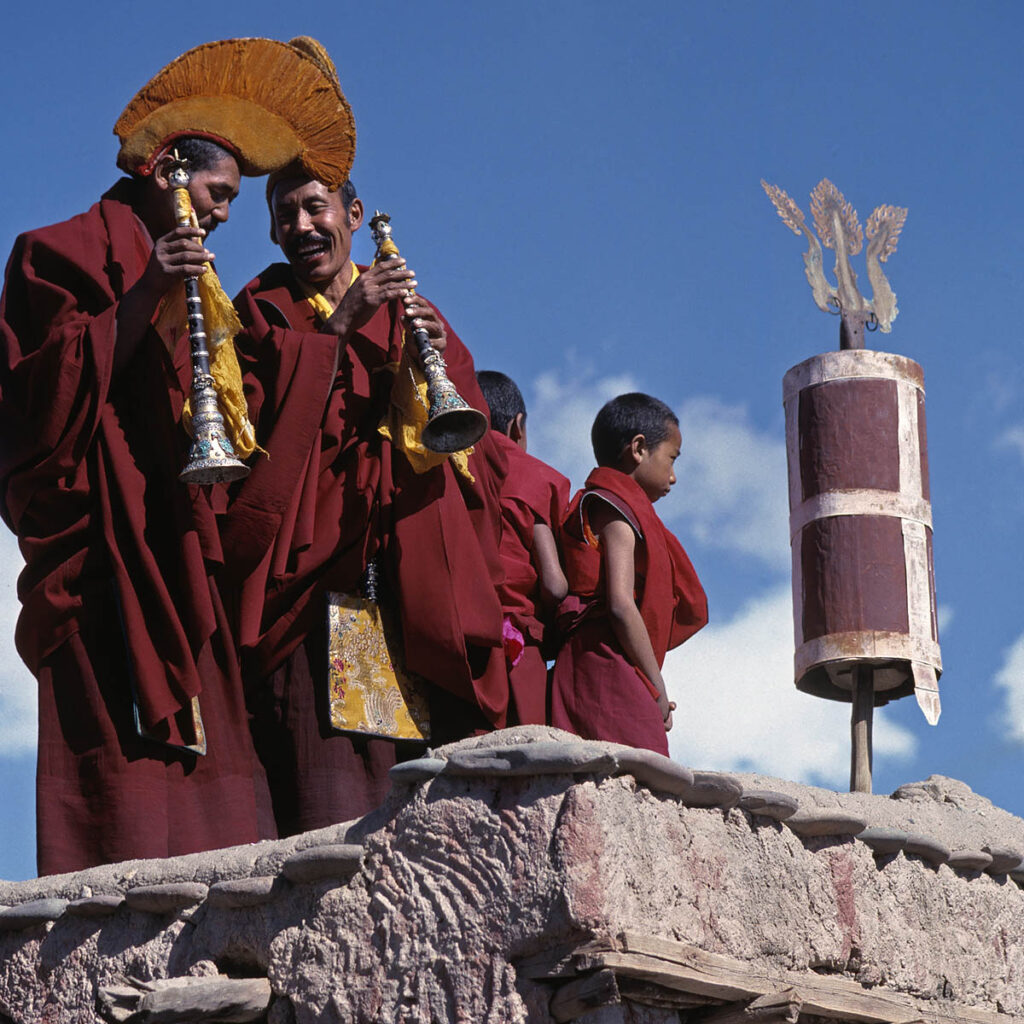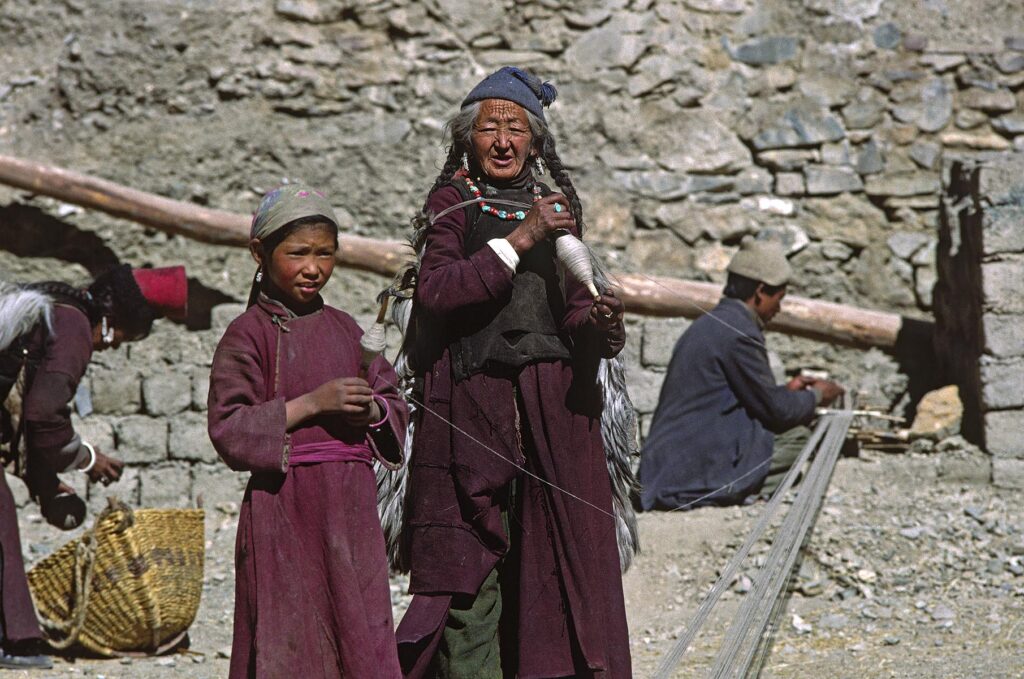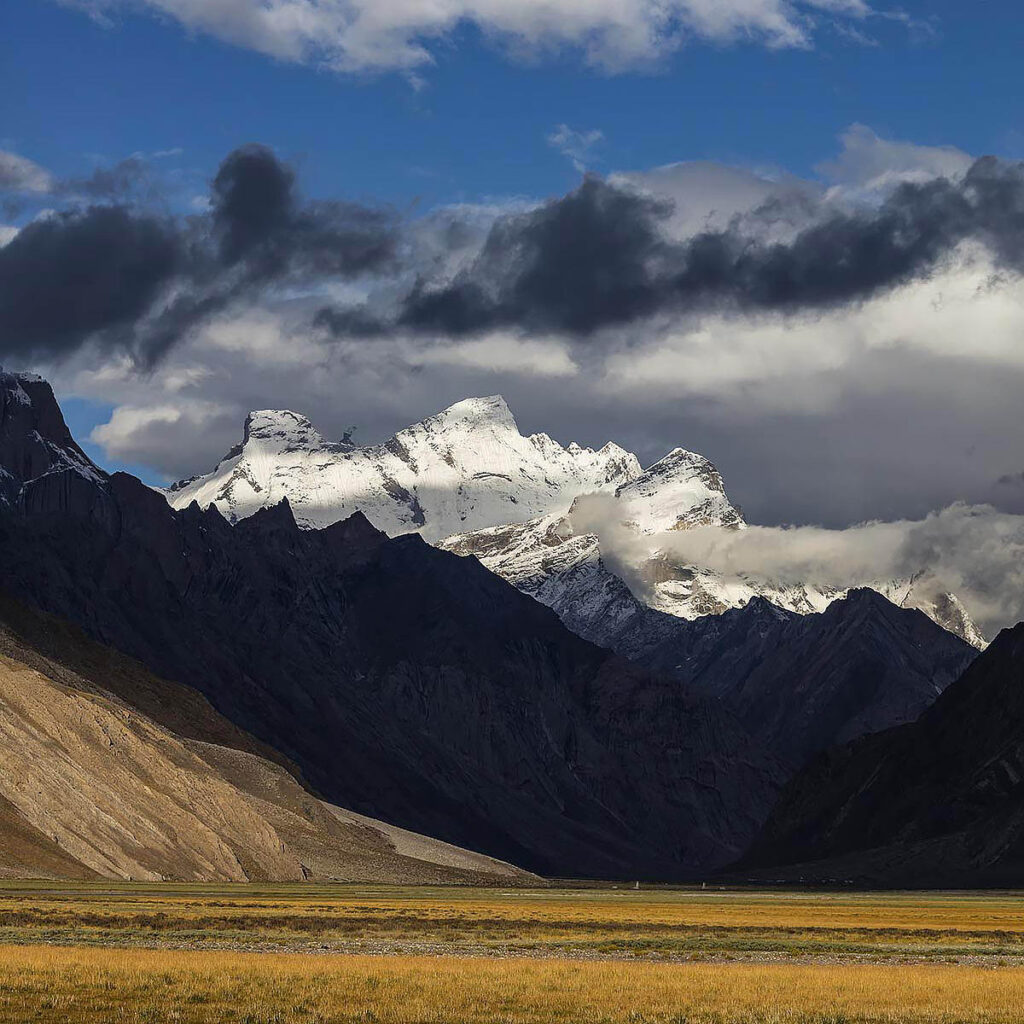LADAKH REVISITED
My wife, son and I were staying in a beautifully hand carved houseboat on Dahl Lake in Kashmir back in October 1998. The plan was to go overland to Ladakh from there. The problem was the road was about to close for the winter. In those days a date was given as the last day of the year the Indian Military would guarantee your safety in case your car broke down, the road collapsed, or a snowstorm trapped you for the winter. We wanted to take our time and visit Lamayura Monastery, Alchi, Lekir and other Buddhist sites along the route to Leh. After much negotiation with our Kashmiri host who owned the houseboat we were staying in, he agreed to drive us. Our transport would be an Ambassador car, manufactured by Hindustani Motors, which would safely move us over one of the highest dirt roads in the world. He reluctantly agreed to take 5 day driving us to the capital city of Leh but would have to haul ass back to Kashmir in 24 hours after dropping us off.

The trip was astounding. The steep arid landscape was punctuated with riparian woodlands in the bottom of the valleys where the arable land was farmed by small Ladakhi communities such as Alchi and Lamayuru. Farmland along the banks were fallow with sheep, donkeys and goats grazing on the chaff. The apricot trees of which Ladakh is famous were in full fall foliage as were the cottonwood trees and the brilliant colors delighted our eyes in the bright Himalayan sunshine. We were literally the last taxi to head up from Kashmir, the only travelers along the route until we arrived in Leh

We spent the next couple of weeks visiting the Buddhist Monasteries around the valley including Hemis, Shey and Spikuk. Our great good fortune was to be there during the Cham dances that take place each year at Thiksey Monastery. This Galugpa Festival lasts 3 days and is in essence a Buddhist Opera enacted by the monks. Decked out in elaborate antique costumes and masks they reenact historic events accompanies by the root chakra sounds of Tibetan horns and cymbals. The Ladakhi’s walk for days to attend the festival and were dressed in their finest sheep skin chubas and jewelry. The women were wearing elaborate Perak headdresses studded with chunks of turquoise, red coral, gau boxes and precious stones.


There have been many societal challenges since that time as their ancient culture has tried to integrate into modern times. The Ladakhi’s are also facing the challenge of climate change as their glaciers are receding causing great difficulty in continuing to farm in the high dessert. One creative solution they came up with is to store water during the winter by spraying water that then freezes into large ice structures which melt in the summer feeding the streams they use for irrigation. In addition, the Indian military presence has increased tremendously over the last 30 years with the ever-present conflict between Pakistan and India over Kashmir. The military controls much of the land in Ladakh.


In 2019 I was invited on a trip to raft the Zanskar River in Ladakh with my friend Jock Montgomery and his wife Annie who run Compass Rose Expeditions (I highly recommend his trips). We spent 6 days rafting down the amazing Zanskar river gorge through some of the most remote and beautiful landscape I have ever had the privilege to experience. Along the way we visited remote villages and Karsha Monastery accessible only by boat. Paddling at 12,000 feet is a challenge and an experience I will never forget. On the way back to Leh we stopped at Lamayuru which I had visited 41 years earlier. I had brought photographs of some of the people that lived there back in the day. Circling the stupas that surround the monastery was an old couple who recognized the people in the photos and remarked on how young they looked. The kept the ones of the people they knew and promised to deliver them. As the Westernization of the world continues it was good to see that some of the traditions are still being honored in this remote area of the Himalayas.


